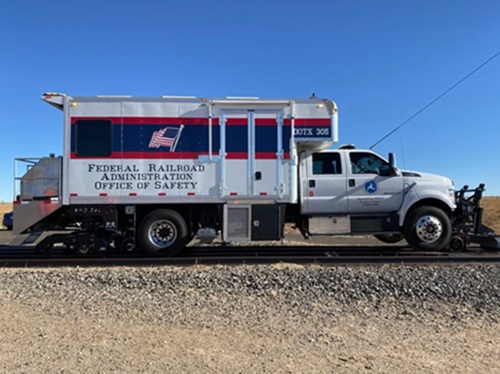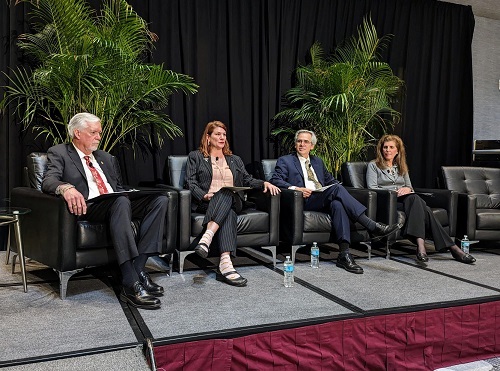How can state departments of transportation advance more transportation-efficient land use decisions in partnership with cities, counties, developers, investors, and advocates to maximize quality-of-life outcomes for the public? That issue formed the focal point of a panel discussion during the American Association of State Highway and Transportation Officials 2023 Washington Briefing, held February 28 through March 3 in Washington, D.C.
[Above photo by AASHTO]
Roger Millar – secretary of the Washington Department of Transportation and AASHTO president – moderated the discussion as it addressed one of his key emphasis areas, which is improving transportation system resilience.

“This session is about working more closely with key land use partners to highlight best practices – including technical assistance, local land use policies, regulations and project actions, and development review –that can lead to improved transportation and land use outcomes,” he explained.
Mariia Zimmerman, strategic advisor for technical assistance and community solution at the U.S. Department of Transportation, noted that it is important to understand that “transportation infrastructure talk” – be it about roads, buses, trains, or pedestrian/bicycle infrastructure – is all part of a larger “land use” discussion.

“The reason we talk about land use is because the success of a project – be it transportation, housing, etc. – really relies on local entities, because they control the land use,” she said.
“That’s why transportation needs stronger connections to those local housing and economic development goals. And the reason we want to drive more collaboration is that it helps gain a better understanding of how transportation and land use function together,” Zimmerman noted.
“And it is really important to understand the impact of such projects at the individual level as well as the overall cumulative impact on a local community – that is where the state DOT can play a key role,” she said.
That collaboration also entails how to improve the coordination of resources to help state DOTs and local communities fill in “knowledge and technical gaps” when meshing together transportation and land use needs. “It is all in our collective interests to support local communities where such projects are concerned,” she said.

Stephanie Hoopes, director of the United Way’s “United for ALICE” initiative, emphasized that integrating transportation and land use planning together is also critical to supporting low income workers and their families.
She explained that “ALICE” stands for “Asset Limited, Income Constrained, Employed” and seeks to identify the “mismatch” between low-paying jobs and the cost of survival, then develop solutions that promote financial stability at the local, state, and national levels.
“These are households that struggle paycheck to paycheck, yet perform jobs vital to our economy,” Hoopes noted. “They are households existing just above the poverty level. They can’t afford a car, so they rely on other forms of transportation. And they can’t afford to live where they work; so they live farther away in substandard or crowded housing.”
The key to effectively helping ALICE households, Hoopes said, is to not look at transportation in isolation. “For these households, transportation impacts everything: child care, food, healthcare. These are also households that work ‘alternative hours’ compared to others, so they have distinct transportation needs,” she pointed out. “But affordable housing is the foundation – if it is affordable, and the location ‘transportation efficient’ for their work needs, their economic issues are reduced.”

Yet Hugh Morris, smart growth policy representative for the National Association of Realtors®, stressed that addressing and improving those housing and transportation needs does not happen overnight – it takes time, collaboration, and major investments.
“It takes a long time to change built environment,” he explained.
“For example, our national [home buyers and sellers] survey is split 50/50 between those favoring single family homes that require driving versus those who desire attached, walkable housing,” Morris added.
“So if we are going to move forward to make biking and walking more viable transportation options, it must happen at a smaller level with a finer grain of detail,” he said. “That’s why collaboration across the local, state, and national level where transportation and housing is concerned is so important.”
 Top Stories
Top Stories
State DOTs Making Preparations for Wintertime Operations
December 12, 2025 Top Stories
Top Stories

